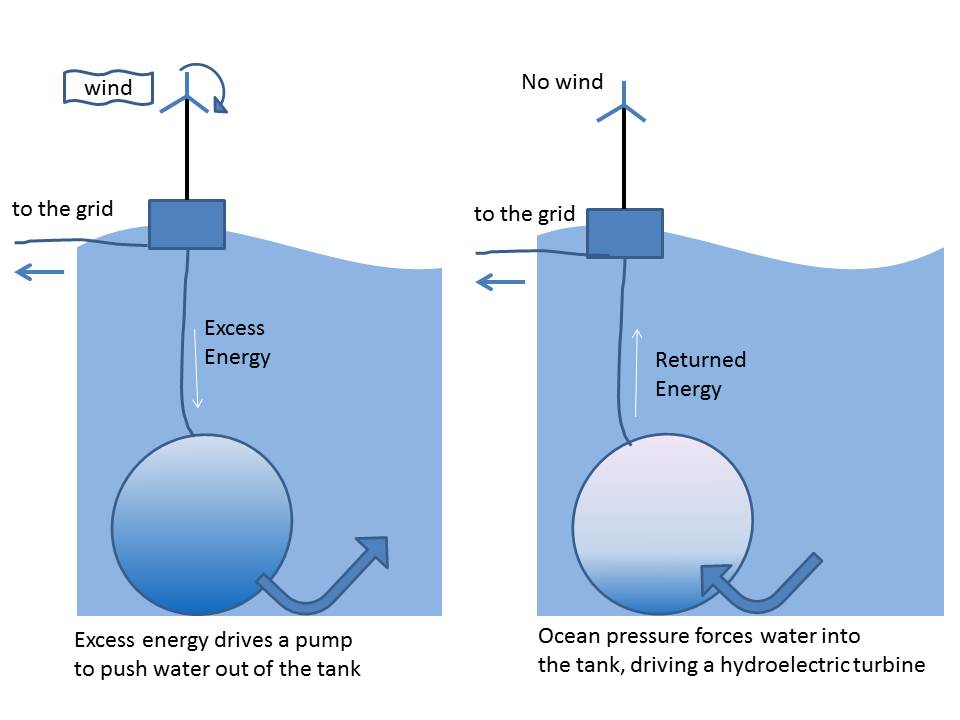Tom Lombardo posted on http://www.engineering.com/ElectronicsDesign/ElectronicsDesignArticles/ArticleID/5680/Does-This-Energy-Storage-System-Have-Potential.aspx
It's not a new concept: When a wind turbine or solar array generates more energy than you're using, the excess energy can be stored by pumping water into an elevated holding tank, converting kinetic energy into potential energy. When energy is needed, the water flows down and spins a turbine that generates electricity.
Engineers at MIT are proposing a similar system for off-shore wind turbines, but instead of an elevated holding tank, the water would be stored in a 25 meter concrete spherical tank that also anchors the floating turbine to the ocean floor. The sphere is placed at a depth of 400 meters. Excess electrical energy pumps water out of the tank and into the ocean, and when energy is needed the water flows back into the sphere and drives a hydroelectric generator.

Image: Tom Lombardo
MIT researchers estimate that one sphere can store the equivalent of 6 MWh of energy and would cost roughly $12M to build and install. Deployment would require a new kind of barge, since nothing currently exists that can carry such a load. They believe that the cost could decrease in time, and suggest that eventually the system could store energy at a cost of about $0.06/kWh, a rate that's acceptable by industry standards. Since the entire system is grid-tied, the excess energy could come from sources such as an on-shore solar array in addition to the off-shore wind turbines. (Why not a floating solar array while we're at it?)
I usually write about technologies that I believe have serious potential, but I have to admit, this idea is difficult for me to fathom (excuse the pun). At a depth of 400 m, the pressure is about 412 N/cm2 (600 psi). Install a pump capable of producing that kind of pressure and immerse it in salt water. Oh, and remember that anything with moving parts requires periodic maintenance, so you'll be sending a diver down to the sphere every now and then.
The numbers may work out in theory, but in practice I'm not sure this idea holds water.
Read More at:
http://web.mit.edu/newsoffice/2013/wind-power-even-without-the-wind-0425.html